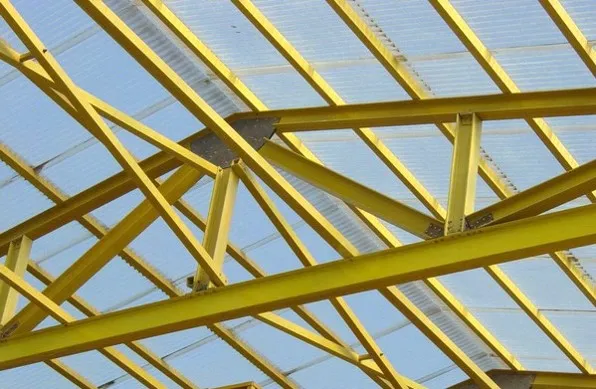loading...
- No. 9, Xingyuan South Street, Dongwaihuan Road, Zaoqiang County, Hengshui, Hebei, China
- admin@zjcomposites.com
- +86 15097380338
- Welcome to visit our website!
Durable GRP Walkway Grating Solutions for Safe and Efficient Foot Traffic
Exploring GRP Walkway Grating A Versatile Solution for Safe and Efficient Walkways
In various industrial, commercial, and even residential applications, walkway safety and functionality are paramount. One material that has gained significant popularity in recent years is Glass Reinforced Plastic (GRP) grating. This innovative solution offers numerous benefits that make it an ideal choice for walkways in a wide range of settings. In this article, we will explore the features, advantages, and applications of GRP walkway grating, highlighting why it stands out as an effective solution for safety and design.
Understanding GRP Walkway Grating
At its core, GRP walkway grating is a composite material made from a combination of glass fibers and a polymer resin. This unique structure gives GRP grating its distinctive strength and durability, making it one of the most reliable materials for constructing walkways. GRP grating is available in various configurations, sizes, and colors, allowing for customization to suit specific environmental needs and aesthetic preferences.
Key Features of GRP Walkway Grating
1. Corrosion Resistance One of the standout features of GRP grating is its exceptional resistance to corrosion. Unlike traditional materials such as steel or wood, GRP does not rust or decay when exposed to harsh chemicals, moisture, or saline environments. This makes it an optimal choice for installations in marine, wastewater, and chemical processing facilities.
2. Lightweight but Strong GRP grating is significantly lighter than metal alternatives, making it easier to handle and install. Despite its lightweight nature, it does not compromise on strength. GRP can support heavy loads, making it suitable for high-traffic areas.
3. Slip Resistance Safety is a critical concern in any walkway design. GRP grating offers excellent slip resistance, even in wet or oily conditions. This quality is crucial for preventing slips and falls, protecting both workers and visitors in various environments.
4. Low Maintenance GRP walkway grating requires minimal maintenance compared to traditional materials. It does not need to be painted, sealed, or treated, significantly reducing long-term upkeep costs.
grp walkway grating

5. UV Resistance The polymer resin used in GRP is designed to withstand UV exposure without degrading or fading. This quality extends the lifespan of the grating, making it suitable for outdoor applications where sun exposure is a factor.
Applications of GRP Walkway Grating
The versatility of GRP walkway grating allows it to be used in numerous applications across different sectors
- Industrial Settings In factories, power plants, and warehouses, GRP grating provides safe walkways for workers while offering the durability to withstand heavy equipment and foot traffic.
- Commercial Spaces Retail establishments and shopping centers benefit from GRP walkways, which can be customized to blend with the overall design while providing a safe, slip-resistant surface for customers.
- Marine Environments The corrosion-resistant properties of GRP make it ideal for use in docks, piers, and boats, where exposure to water is constant.
- Public Infrastructure Parks, pedestrian bridges, and walkways in urban areas often utilize GRP for its aesthetic appeal and functional benefits.
Conclusion
In conclusion, GRP walkway grating is a revolutionary material that offers numerous advantages over traditional walkway materials. Its combination of strength, lightweight properties, corrosion resistance, slip resistance, and low maintenance makes it a remarkable solution for a variety of applications. As safety and efficiency continue to be paramount in the construction and maintenance of walkways, the adoption of GRP grating is likely to rise across diverse sectors. Whether for industrial, commercial, or public use, GRP walkway grating proves to be a smart investment for both functionality and design. Embracing this technology is a step toward enhancing safety and durability in our daily environments.
-
The Rise of FRP Profiles: Strong, Lightweight, and Built to LastNewsJul.14,2025
-
SMC Panel Tanks: A Modern Water Storage Solution for All EnvironmentsNewsJul.14,2025
-
GRP Grating: A Modern Solution for Safe and Durable Access SystemsNewsJul.14,2025
-
Galvanized Steel Water Tanks: Durable, Reliable, and Ready for UseNewsJul.14,2025
-
FRP Mini Mesh Grating: The Safer, Smarter Flooring SolutionNewsJul.14,2025
-
Exploring FRP Vessels: Durable Solutions for Modern Fluid HandlingNewsJul.14,2025
-
GRP Structures: The Future of Lightweight, High-Performance EngineeringNewsJun.20,2025
